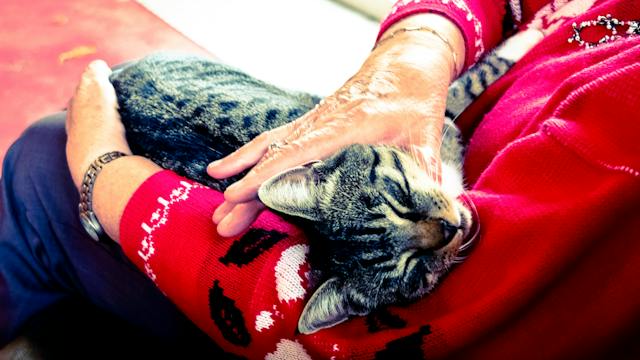As our feline friends gracefully enter their golden years, they need a special touch of care and affection. Navigating this stage of their lives can be both rewarding and challenging. This guide is for all cat parents who want to make their senior cat’s final years comfortable, healthy and full of love. From understanding their changing needs to making everyday life easier, we delve into the essentials of caring for an older cat, ensuring these venerable pets live their best lives in their later years.
Understanding the changing health needs of your older cat
As cats age, their health needs evolve significantly. Just like people, older cats can experience a variety of age-related problems, including joint pain, dental problems and reduced mobility. It is critical to remain vigilant and respond to these changes. Regular veterinary checks are becoming more important than ever to monitor their health status. One of the most common problems in older cats is arthritis. This condition can greatly affect their quality of life, causing pain and reducing mobility. As a cat parent, it is essential to recognize the signs of discomfort in your cat, such as an unwillingness to jump or climb stairs. Adjusting their environment to make it more accessible can significantly improve their comfort level. Just as caring for a dog with arthritis requires patience and understanding, so does caring for an older cat with similar problems.
Diet and nutrition for the aging cat
Nutrition plays a crucial role in managing the health of older cats. As their metabolism slows down, they may become prone to weight gain or, conversely, begin to lose weight due to loss of appetite or dental problems. It is essential to feed them a balanced diet appropriate to their age, health status and activity level. Look for cat food that is specially formulated for older cats and is typically lower in calories, easier to digest and contains a balanced blend of essential nutrients. Adequate hydration is also crucial. Many older cats are at risk for kidney problems, so it is crucial to ensure they have constant access to fresh water. Wet food can also help increase water intake.
Make your home a sanctuary for your senior cat
Creating a comfortable and safe home environment is essential to your senior cat’s well-being. This means considering everything from their litter box to their favorite perching spots. With mobility decreasing, it is important to ensure they have easy access to all their necessary services. An important change to consider is the type of cat litter you use. Older cats may find it challenging to use a litter box with high sides or one that is too far from their resting place. Switch to one lightweight cat litter can be a game changer. They can maneuver more easily and are gentler on their paws and joints. Additionally, if you live in a multi-story home, placing litter boxes on each floor of your home ensures that your senior cat always has easy access.
Enrichment and activity for the older cat
Although older cats may not have the same energy levels as they did in their youth, they still need mental and physical stimulation. Maintaining an appropriate activity level is critical to their overall well-being. Gentle play can keep their minds sharp and their bodies active, but it’s important to tailor these activities to their comfort level. Interactive toys that encourage light movements without causing tension can be helpful. Also consider puzzle feeders that stimulate their mental abilities while providing a fun and rewarding challenge. Every cat is unique, so take your pet’s preferences and limitations into account. Encouraging exercise through gentle play can help maintain muscle tone and prevent obesity, which is especially important for less active older cats.
Emotional well-being and comfort in later life
Senior cats, like humans, may experience a change in their emotional needs as they age. They often need more affection and may be more dependent on their human companions for comfort. It’s crucial that you spend quality time with your senior cat and provide him with the love and attention he deserves. Watch for any changes in their behavior as these could be signs of discomfort or illness. Some cats may seek solitude, while others may become more affectionate. Respecting their needs and providing a calm, comfortable environment is critical. Soft bedding, easily accessible cozy spots and a quiet, stress-free home can significantly improve their quality of life. Consider your older cat’s sensory needs. Their sense of smell and hearing can diminish with age, so it is important to approach them carefully to avoid startling them. Regular grooming can also be a soothing activity and an opportunity to check for any lumps, bumps or changes in coat or skin condition.
Caring for an older cat is a very satisfying experience. It’s a chance to give back the love and companionship they’ve provided throughout their lives. By understanding and adapting to your cat’s changing needs, you can ensure that your cat’s older years are as comfortable and joyful as possible. Your attentive care and love can make a significant difference in the quality of their lives, allowing them to age beautifully and contentedly in the warmth of your home.





